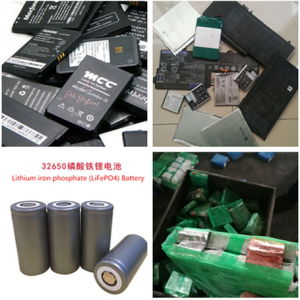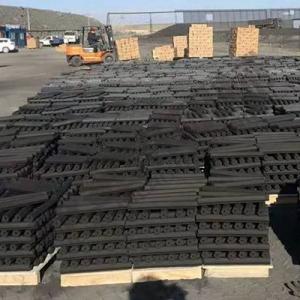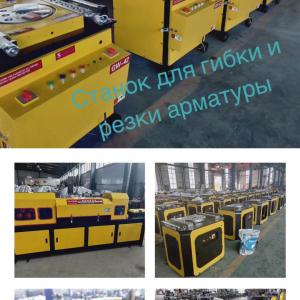The lithium-ion battery is widely used and needs to be recycled simultaneously
The lithium-ion battery is widely used and needs to be recycled simultaneously
The 2019 Nobel Chemistry Prize, unveiled late yesterday evening Beijing Time, goes to three scientists who have contributed to the nearly universal use of Lithium-Ion Batteries: John Johan. B. Goodenough, M. Stanley. Weitinghan and Akira Yoshino, both of whom have frequent interactions with domestic experts, work well together in the energy and power sectors.
To make a commercial lithium-ion battery
"This year's award is well deserved, " said Lin Bolin, a professor at the Shanghaitech University's School of material science and technology. Lithium batteries have been on the market for nearly 30 years, and academics have been clamoring for a Nobel Prize for their invention. Why did the Nobel Prize go to Lithium batteries this year? It is speculated that this is because lithium batteries have been widely used in mobile products such as new energy vehicles in recent years. In addition, it may also be related to global climate change caused by the pressure to reduce carbon dioxide emissions. "In a paper published in the journal Joule, our team predicted that the period up to 2040 would be the last window of time for humans to avoid catastrophic climate change by reducing carbon dioxide emissions. The lithium-ion battery is an integral part of low-carbon new energy storage."
The three award-winning scientists went on to create a commercial lithium-ion battery. M. Stanley. Whittingham was the lithium-ion battery pioneer. In 1970, he used titanium sulfide as a positive material, lithium metal as a negative material, made into a small lithium battery, but did not choose the right material, the initial lithium battery extremely explosive. John Johan, 1980. B. Goodenough proposed using metal oxides to make the positive electrode of a battery, greatly improving the performance of lithium-ion batteries. Still, he failed to develop a commercial lithium-ion battery. It wasn't until 1985, when the third prize winner, Akira Yoshino, combined lithium metal and carbon to form the negative electrode of a battery that the lithium-ion battery was truly secure. Since then, lithium has really entered and changed people's lives.
In fact, the new cathode material for Tesla's latest electric car, as well as the new compound, lithium nickel cobalt oxide, which is being studied by Jiang Hao, deputy director of the East China University of Science and Technology's key laboratory for the preparation and application of ultrafine materials, reduce the proportion of the precious metal cobalt and increase the proportion of nickel to 80 percent or more. But there is no denying that Lithium-Ion batteries have not fundamentally broken through Goodenough's basic architecture.
But Wilbert Suvrijn, a professor at the University of Shanghai for Science and Technology, says lithium is relatively rare on earth at the moment, "If all the lithium on the planet were to be used to produce new-energy electric cars, there would only be enough for ten million new-energy cars. " So, while the lithium-ion battery is widely used, it also needs to be synchronized with the recovery of treatment and other aspects of research.
Scientific Research is not done in a day
According to the announcement of the Nobel Prize in Chemistry, the prediction made many years ago by Professor Ma Zifeng, a distinguished professor at the Shanghai Jiao Tong University and Associate Dean of the Energy Research Institute, has been verified. Six months ago he invited M. Stanley. Weitinghan came to Shanghai and went to Shaoxing to attend the 14th china-us Electric Vehicle and Battery Technology Information Exchange Conference. "Nottingham and I see each other several times a year. "
Akira Yoshino was also invited to Shanghai, where he said Lithium-Ion batteries for cars and new energy vehicles were growing rapidly and spoke highly of China's lithium-ion battery manufacturers. He jokes that with the help of Japanese technology, lithium batteries have made major breakthroughs in research and development, and Chinese companies are working with companies around the world to redefine the future of lithium batteries, "despite the ever-changing nature of technology, the corresponding scientific research can not be done in a day. The real point of technology is to find a balance between speed and slowness. "
The Chinese research team also contributed. Ma Zifeng team completed the "lithium iron phosphate power battery manufacturing and its application process key technology" project, this year won the national science and Technology Progress Award Second Prize. He said that China has been leading the world in R & D AND PRODUCTION OF LITHIUM IRON PHOSPHATE batteries for electric vehicles such as new energy vehicles, Rail Transit, logistics vehicles, and smart grid energy storage systems. "A new technology is not born out of the moment of inspiration but has evolved out of the constant exploration and practice of a broad range of researchers.
Welcome to consult us for Production line of Lithium battery crushing & recycling





